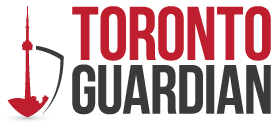Ontario’s regulated online gaming space has come a long way in just a few years. What began as a major policy shift in 2022 is now morphing into a mature ecosystem where compliance, innovation, and growth all matter. For players, businesses, and regulators in Ontario the change is real, and the implications are practical and significant.

In this article, we’ll break down what the regulatory changes mean for the iGaming market in Ontario. We’ll explore how compliance obligations are increasing, how innovation is being steered by regulation rather than stopped, and how opportunities are emerging in a more structured environment. I’ll keep it relaxed, straightforward, and yes a little fun.
Compliance is no longer a checkbox
For online casino-style operations and sports-betting outlets under Ontario law, the compliance burden has stepped up. The Alcohol and Gaming Commission of Ontario (AGCO) and iGaming Ontario (iGO) now emphasise operators needing to monitor customer behaviour in real time, maintain detailed audit trails, and apply stricter rules on advertising and affiliates.
What that means for a platform: you can’t just throw up a licence and hope for the best. You’ve got to demonstrate you are doing things like identifying “loss-chasing” behaviour, verifying geolocation, ensuring promotions meet clarity and fairness standards, and reporting regularly. Operators that treat compliance as an afterthought may face heavy consequences. For the player in Ontario this translates to higher standards of transparency, stronger consumer protections and a lower chance you’ll end up on a shady site.
Innovation finds its boundaries (and opportunities)
Often people assume regulation kills innovation. In Ontario that’s not the case – regulation is shaping innovation. Because the market is open and competitive, but also regulated, there’s room for operators and suppliers to develop new products (live games, mobile-first experiences, VR-style engagements) but they must do so within a guard-railed system. For example, growth in wagers hit CA$82.7 billion in 2024-25 with gross gaming revenue (GGR) of about CA$3.2 billion.
Because of that scale, innovation becomes less about “what can we get away with” and more about “how can we enhance experience, retention and responsible play”. That means if you are a player in Ontario you may see new features, smoother mobile experiences and better game variety. It also means you’ll benefit from a marketplace where fewer corners are cut. If you’re a developer or a business you’ll want to be aware that your tech must support compliance (for example data-tracking, geofencing, AML controls) even as you try to stand out.
Market opportunities: the numbers now support scale
With the regulated market in Ontario delivering strong results growth-wise, the opportunity is clear. In its third full year the Ontario iGaming market posted about CA$3.2 billion in gross gaming revenue and CA$82.7 billion in total wagers.
For businesses, this signals that Ontario is not a side market- it’s a major opportunity. For technology providers, service firms, marketing affiliates (within the regulated framework) the growth means demand for innovation, customer support, analytics, compliance tools and localized offerings. For players in Ontario, that means more options, better services and more mature platforms with local support, Canadian currency options and payment methods tuned to your needs.
Find out the best online casinos in Ontario with this lens
If you’re based in Ontario and you’re scouting platforms you’ll want to find out the best online casinos in Ontario through the frame of regulation, innovation, and local suitability.
What you should check: Is the site licensed in Ontario? Does it allow CAD deposits and Canadian banking? Are the terms clear? How well does it perform on mobile? Does it provide strong responsible-gaming tools aligned with AGCO/iGO frameworks? These practical questions matter more now than ever. Regulation helps weed out options that are sloppy, unlicensed or built for offshore routing rather than Canadian player experience.
What players should ask and check
Here are practical questions you should ask when choosing a platform in Ontario:
- Verify the licence status: is the operator registered with AGCO/iGO? If yes, you’ve got base-level protection.
- Check payment and withdrawal methods: do they cater to Canadian banks/Interac and CAD? How fast are withdrawals?
- Examine bonus and wagering terms: are they clear to Ontario players or written in global generic form?
- Look at mobile performance and device compatibility: if you’re playing on phone or tablet, lag or crash rates matter.
- Responsible gaming tools: does the site allow self-exclusion, cooling-off periods, spending caps — and are these enforced actively?
- Reputation and complaint history: how do other Ontario players rate the site, especially outside major urban centres?
Doing this means you’re aligning your expectations with a regulated market rather than jumping in with an angle of “big bonus and hope”. It’s more about fit rather than hype.
What risks remain and how they shift
Even with strong regulation there are still risks. Some Canadian players still use unregulated or offshore sites because they chase bigger bonuses or fewer checks. But by doing so they lose access to the protections regulated sites provide. A 2025 study showed about 83.7 % of online gamblers in Ontario played on regulated sites in the past three months, meaning around 16.3 % used unregulated sites only.
For businesses the risk is: once the market is mature, the regulators are not in launch-mode—they are in enforcement-mode. Gaps in affiliate disclosure, weak AML/CTF controls, poor responsible gaming monitoring are not tolerable. For players the risk is less about the platform’s legality and more about your own choice: playing in a place that lacks full protections may cost you money, delay payouts or leave you unsupported.

